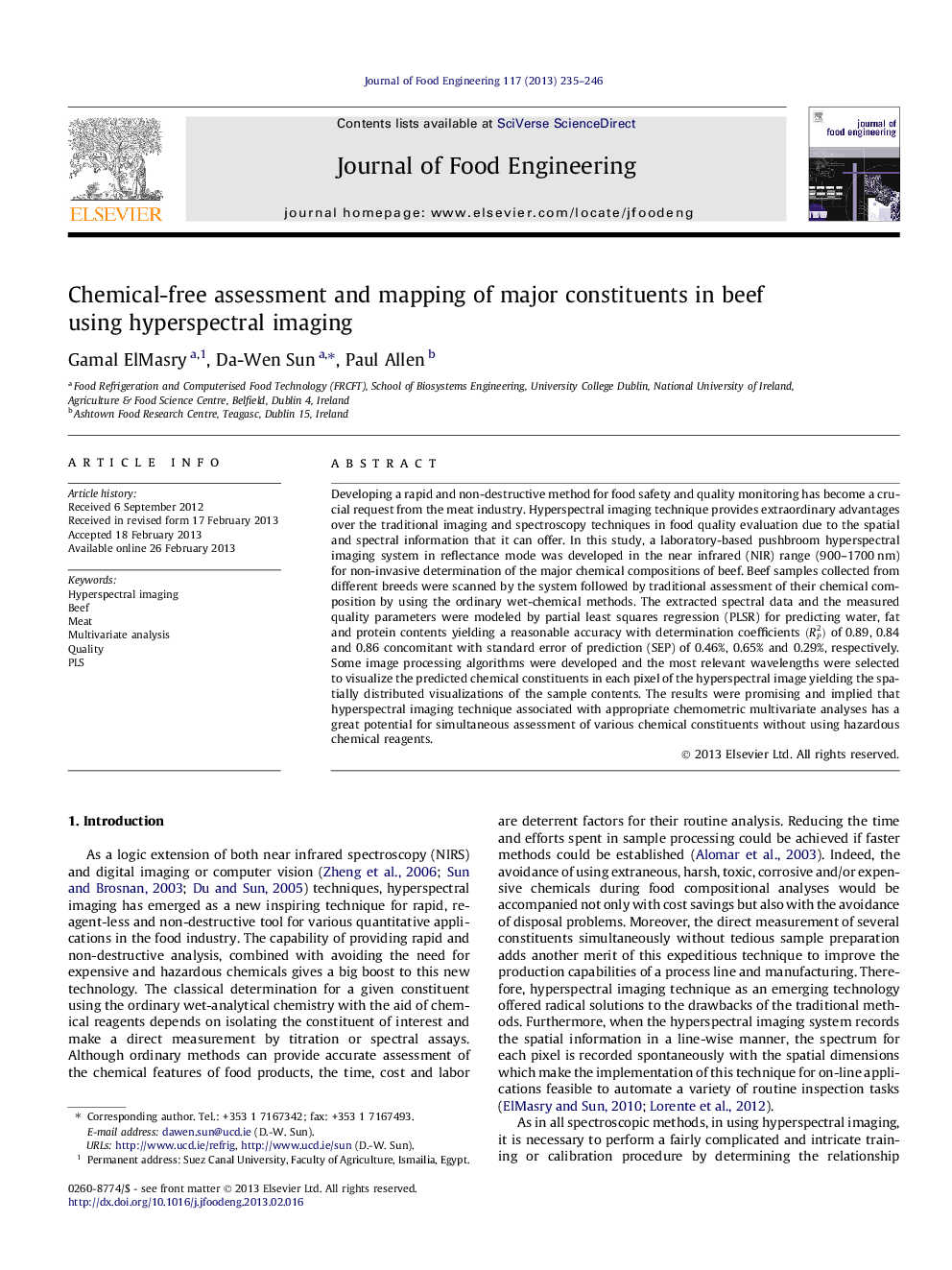| Article ID | Journal | Published Year | Pages | File Type |
|---|---|---|---|---|
| 223242 | Journal of Food Engineering | 2013 | 12 Pages |
Developing a rapid and non-destructive method for food safety and quality monitoring has become a crucial request from the meat industry. Hyperspectral imaging technique provides extraordinary advantages over the traditional imaging and spectroscopy techniques in food quality evaluation due to the spatial and spectral information that it can offer. In this study, a laboratory-based pushbroom hyperspectral imaging system in reflectance mode was developed in the near infrared (NIR) range (900–1700 nm) for non-invasive determination of the major chemical compositions of beef. Beef samples collected from different breeds were scanned by the system followed by traditional assessment of their chemical composition by using the ordinary wet-chemical methods. The extracted spectral data and the measured quality parameters were modeled by partial least squares regression (PLSR) for predicting water, fat and protein contents yielding a reasonable accuracy with determination coefficients (RP2) of 0.89, 0.84 and 0.86 concomitant with standard error of prediction (SEP) of 0.46%, 0.65% and 0.29%, respectively. Some image processing algorithms were developed and the most relevant wavelengths were selected to visualize the predicted chemical constituents in each pixel of the hyperspectral image yielding the spatially distributed visualizations of the sample contents. The results were promising and implied that hyperspectral imaging technique associated with appropriate chemometric multivariate analyses has a great potential for simultaneous assessment of various chemical constituents without using hazardous chemical reagents.
► We developed a hyperspectral imaging system to assess beef chemical composition. ► We developed a band and difference ratio approach for fat pixels segmentation. ► We tested PLS regression for prediction and selecting the optimum wavelengths. ► We developed image processing algorithm for building chemical images of beef.
